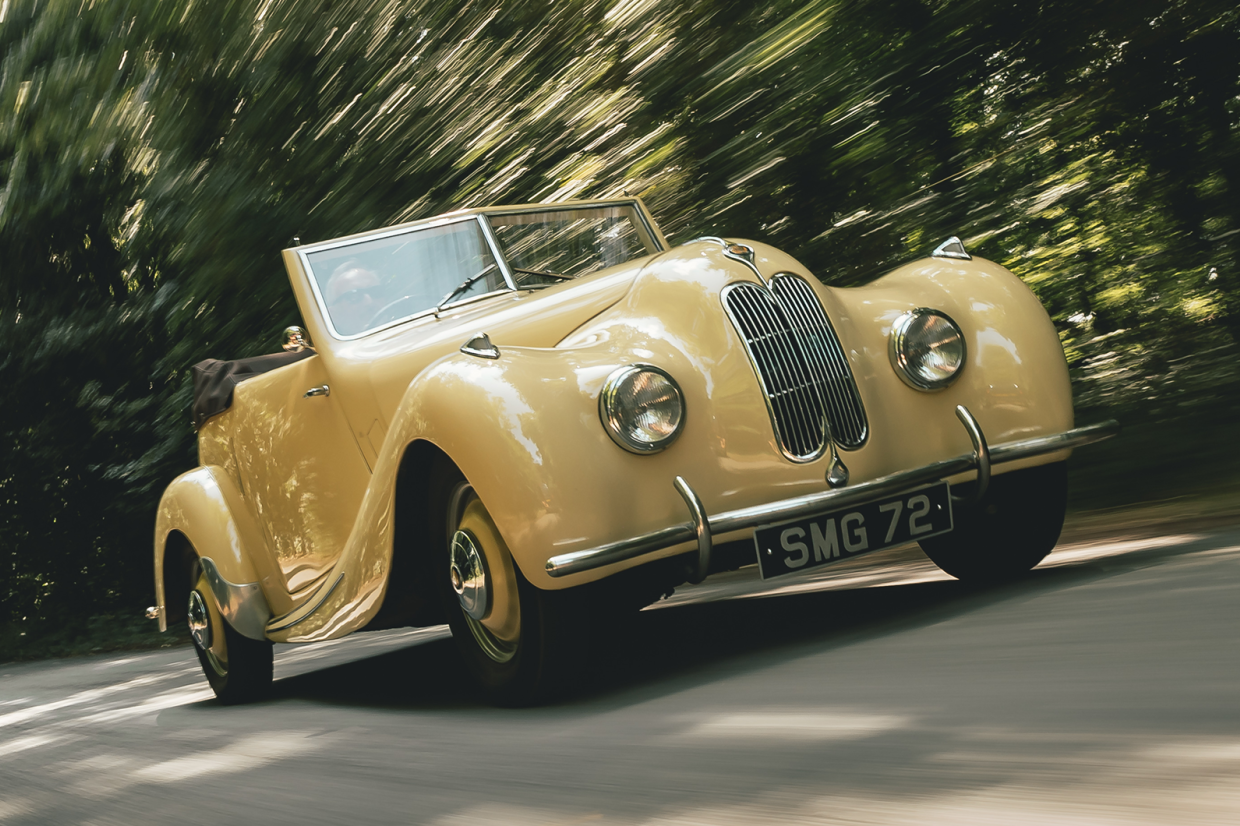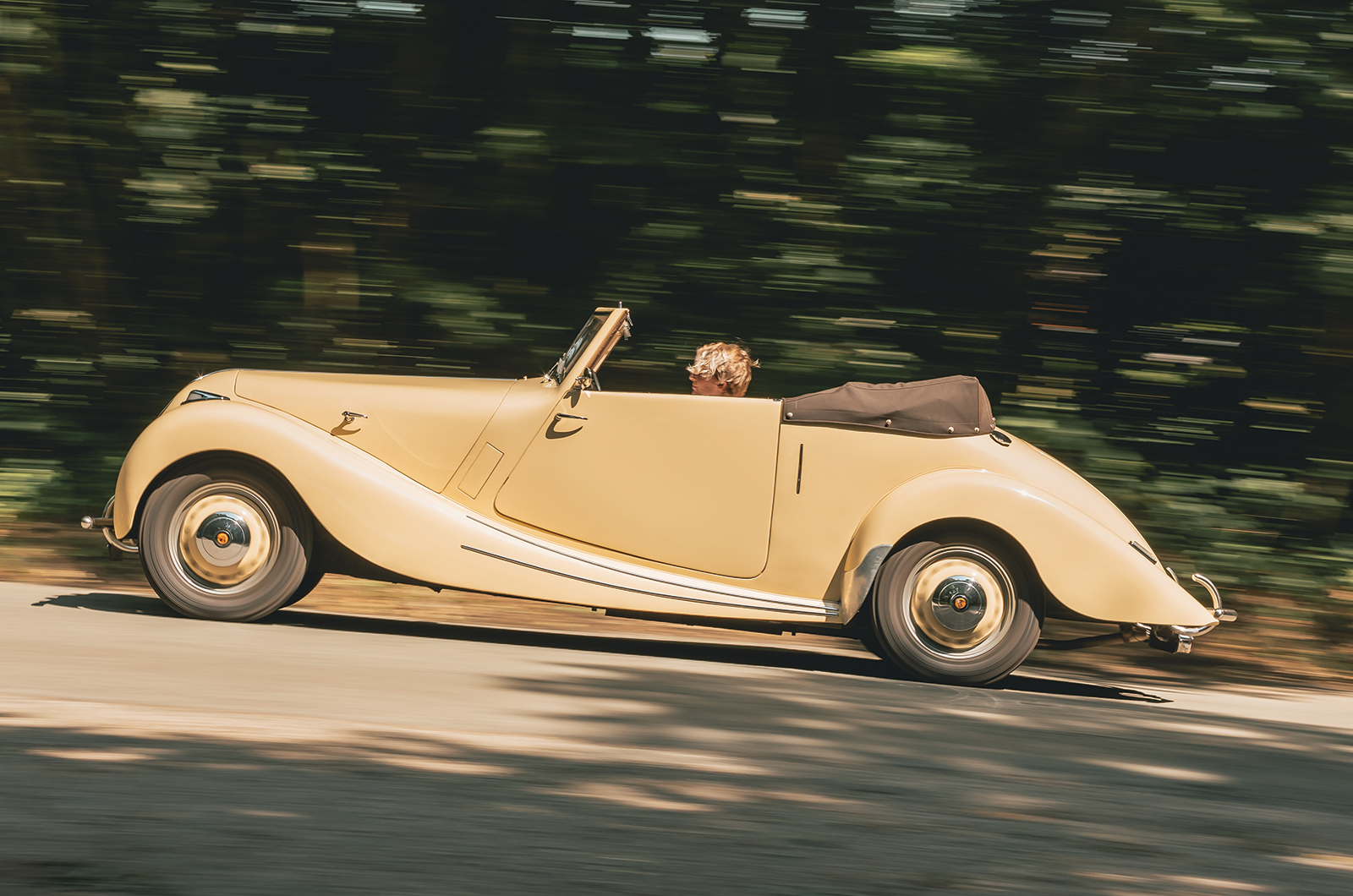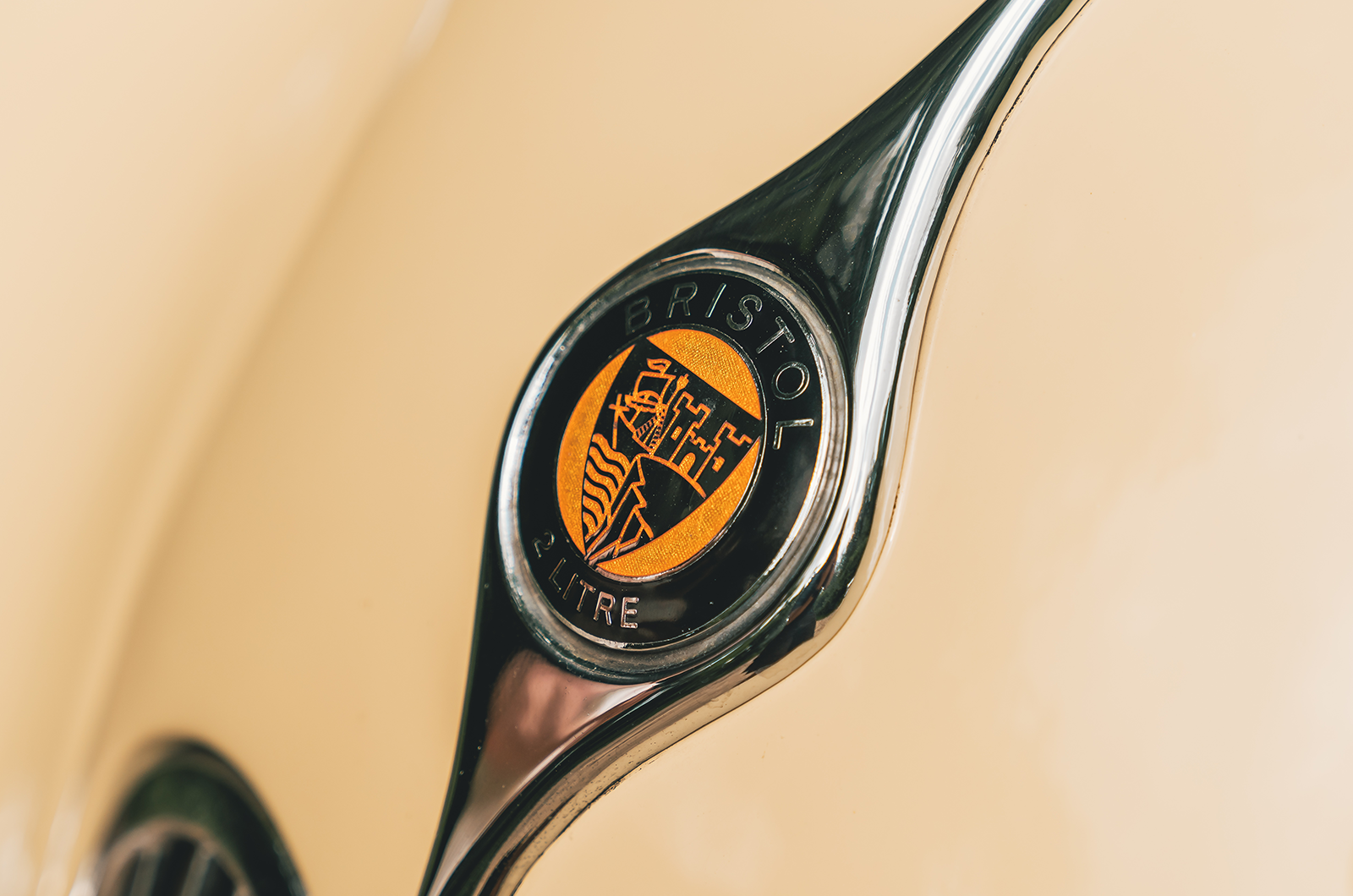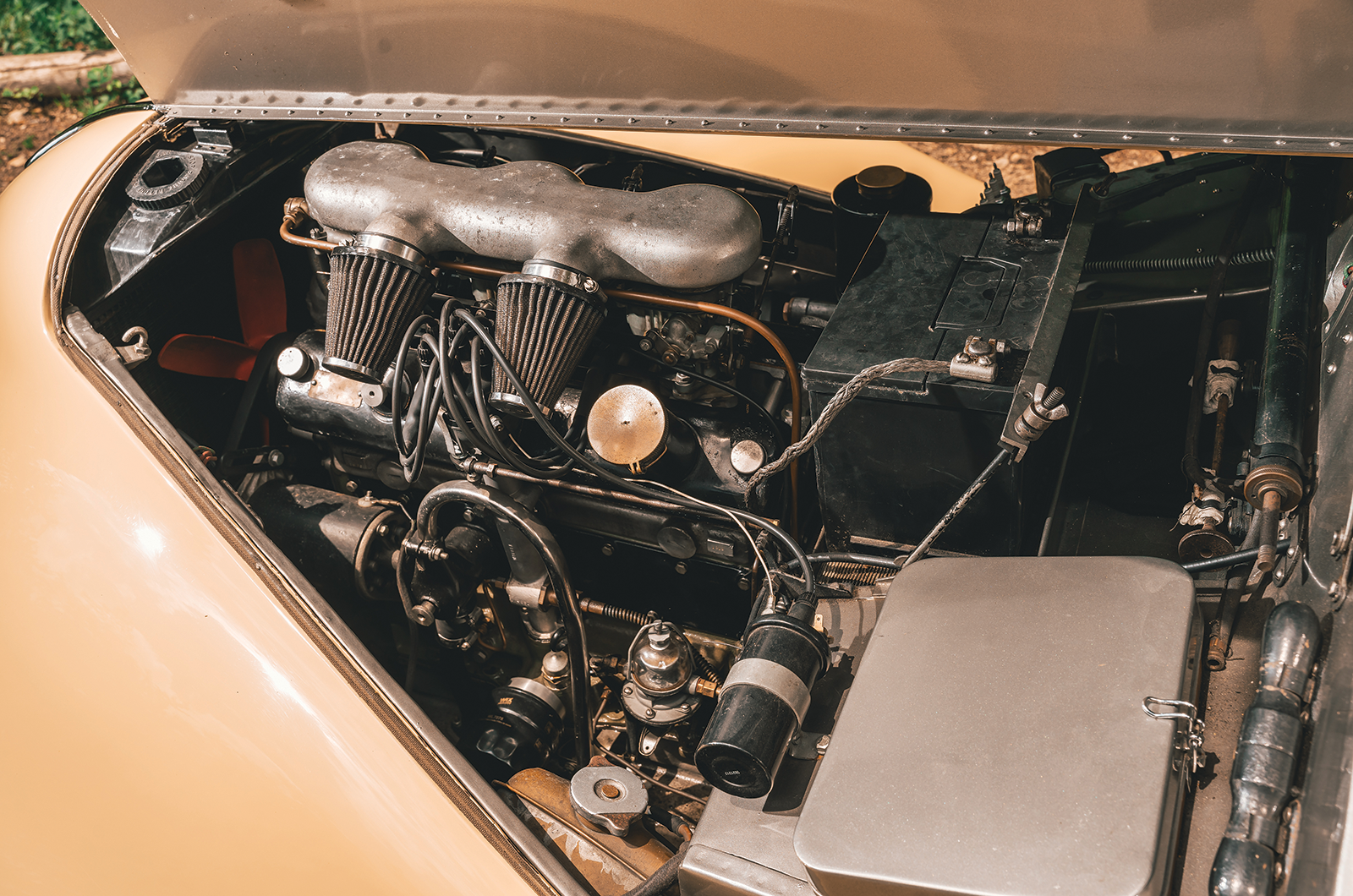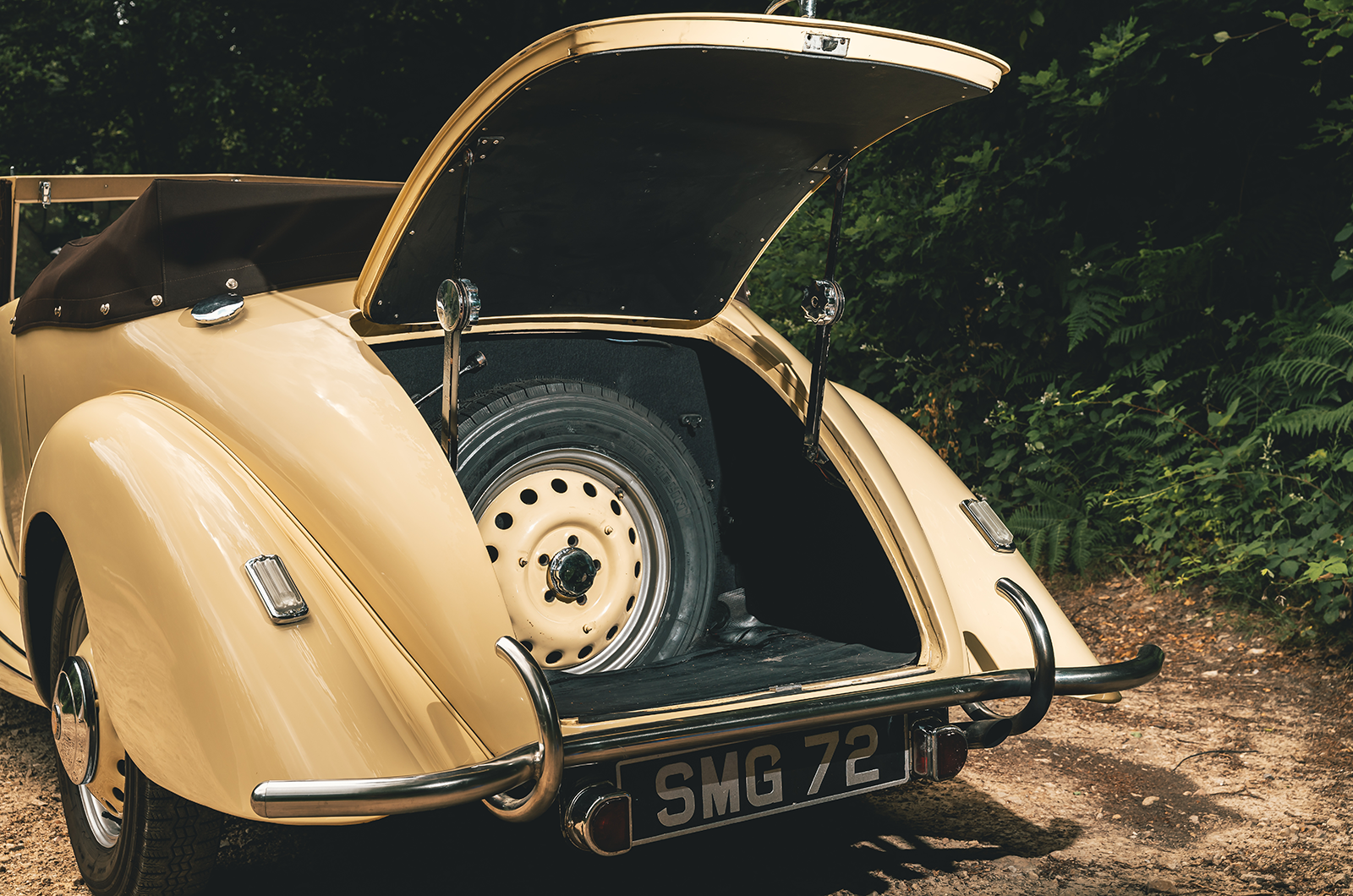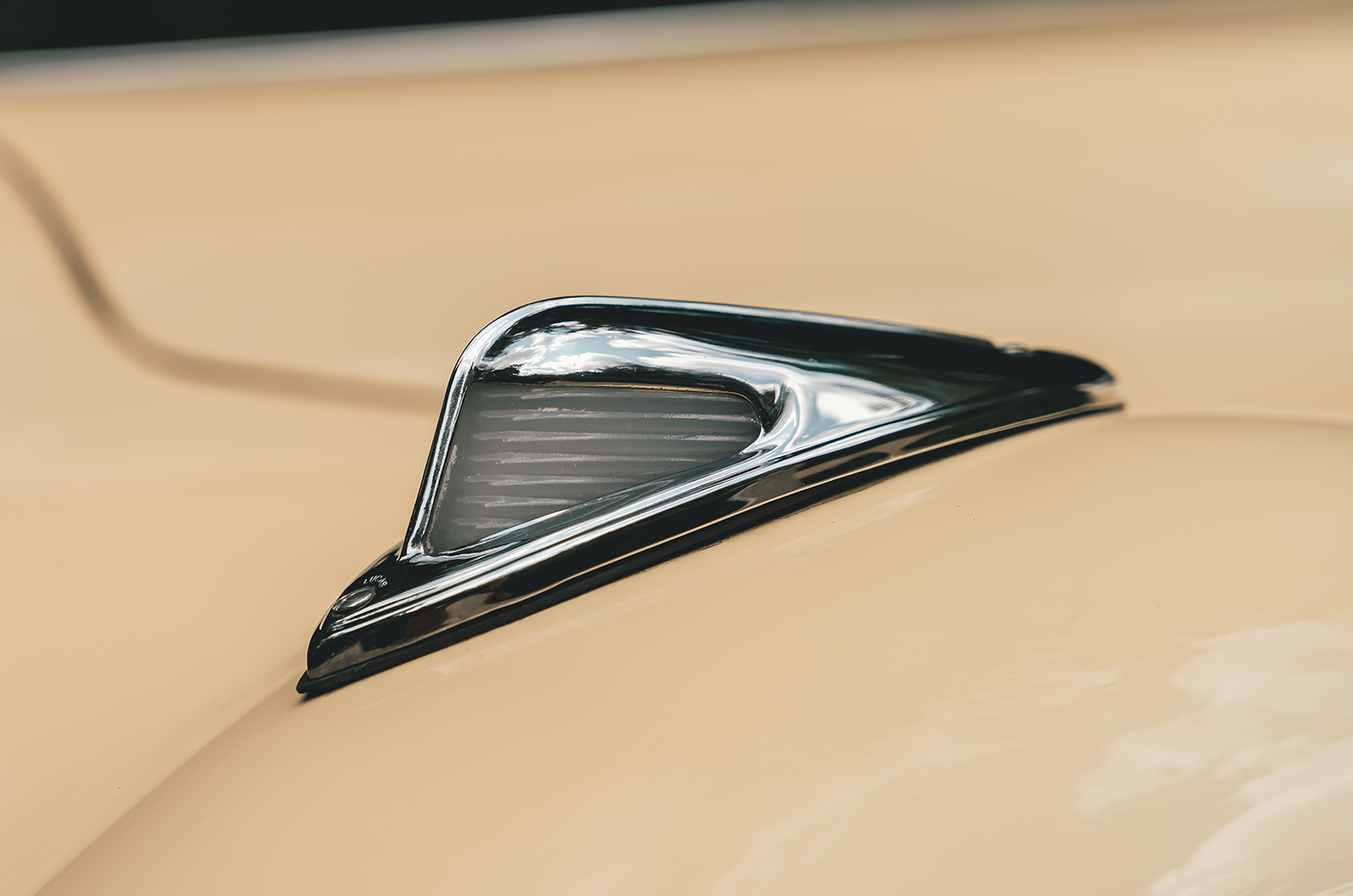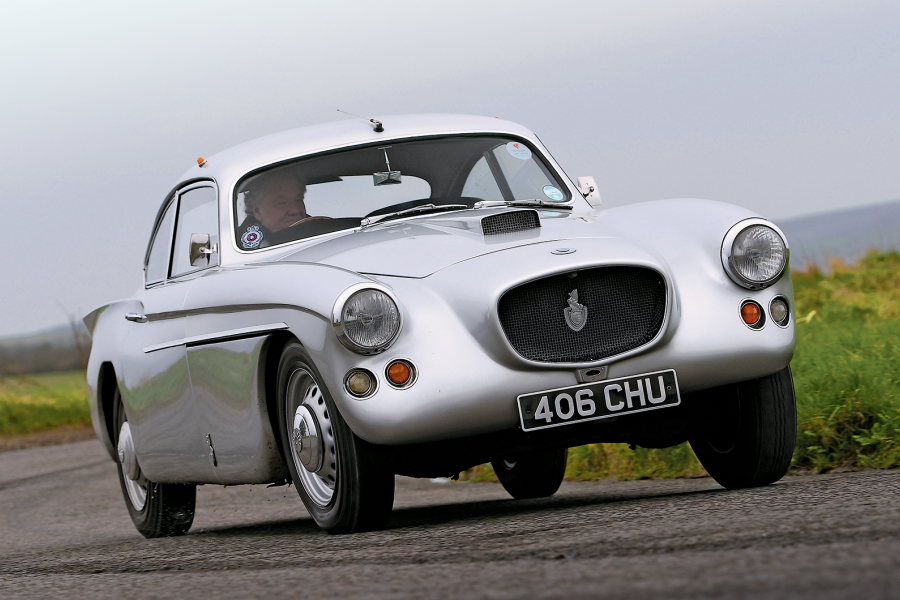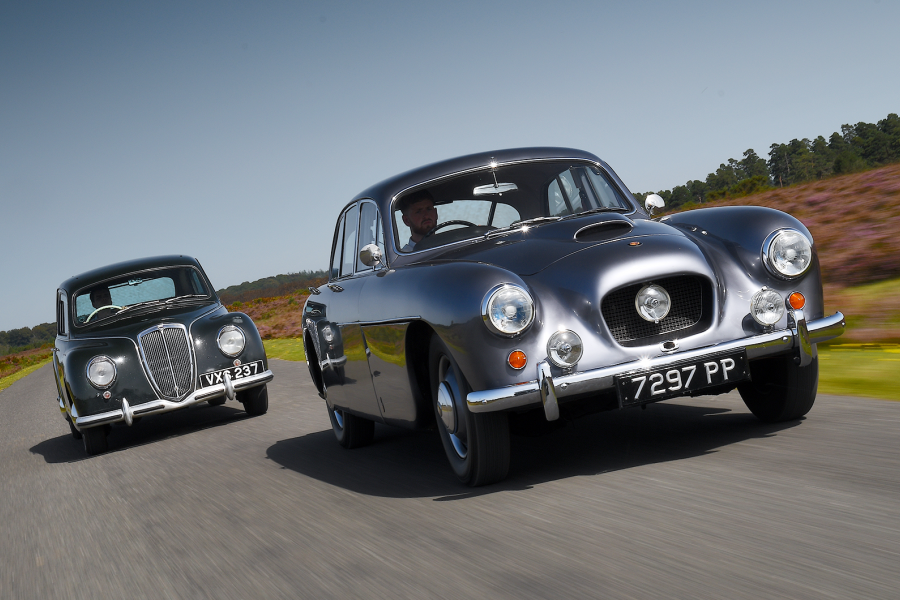Forming an exhibit with one of the prototype saloons, 400/1/004 made Frazer Nash-Bristol’s global debut.
The pair stole headlines, yet this was actually the second time the final prototype had led the way.
Just under a month earlier, chassis four had become the first Bristol ever to be sold.
Liquorice magnate Alan Marshall was the lucky buyer.
Flaps open to help cool the Bristol 400 drophead coupé’s cabin
The long-time BMW enthusiast received a 16.2% discount, offsetting a list price rise to £1500, before settling a bill for £1669 13s 4d once delivery and Purchase Tax had been factored in.
Perhaps due to his personal friendship with Harold Aldington, he let his new car disappear to Geneva free of charge.
It was back by summer and rapidly accumulating miles, clicking into five figures by the end of the year.
The following spring, the car made an appearance in print, when an image of two women, the 400 and an Alpine pass illustrated the contents page of The Motor issue 2432.
The Bristol Aeroplane Company plate reveals this 400 drophead coupé’s provenance
A six-figure mileage, multiple owners and rebuilds, a crash, a repaint into blue, a return to cream and various modifications filled the ensuing decades, before marque enthusiast Dr Andrew Blow spotted the drophead in 1972.
He suspected he’d found something special, so set about proving it.
Between research trips to Cambridge and Oxford universities and a return to Bristol Cars, where developmental markings were uncovered on the steering rack, the car’s prototypical provenance slowly emerged.
And then, in 1976, he sold it.
The Bristol 400 drophead coupé now enjoys weekly use
Shipped to Long Island, 400/1/004 spent the following decade deteriorating, until Robert Sillerman picked it up at auction.
The New Hampshire businessman enjoyed the Bristol as a low-stakes beach car and chewed over what to do next.
In December 1988 he found the answer, when Dr Blow sent him a letter.
The former owner had long regretted parting ways and agreed to buy the car back for $15,000.
The Bristol’s 1971cc straight-six engine makes 80bhp at 4200rpm, just before the redline
Appearing as a discovery in C&SC soon after (July 1989), his cabrio began the long trip home, reunited with its original SMG 72 registration in 1991.
Either side of the millennium, the 400 finally received the renovation it deserved.
Alterations made to the car both during and since that five-year overhaul stop me short of drawing total conclusions, but my convictions are growing stronger by the mile, especially once I re-stow the roof.
Important gauges are behind the Bristol 400 drophead coupé’s three-spoke steering wheel
Beneath the later, more powerful 100A engine, 1950s 403 BWCR transmission, servo-assisted disc brakes, door mirrors and overdrive, chassis four still has its considered, luxuriously usable bones intact.
It’s no accident that current owner Steven Parker drives it every single week.
“I always marvel that this 76-year-old machine can fire straight up and sweep down the A2, fuss-free at 70mph,” he says.
As charming as it is soothing, versatile and satisfying in equal measure, the 400 drophead coupé is an utter delight.
‘Both more refined and more conservative than the German source material, the Bristol drophead’s cockpit is a very pleasant place to sit’
Bristol should have stuck to its guns.
Instead, the original open-top 400 fell casualty to a messy divorce.
Always on-trend and frustrated by the company’s conservatism, Aldy dispatched a brace of bare Bristol chassis to Italy in November 1946, briefing carrozzerie Touring and Farina to craft modish new bodies that would better catch buyers’ eyes.
The first of them produced a slippery coupé to its Superleggera stressed-panel tubular framework principles, which BAC would ultimately redevelop into the 401 for 1948.
The Bristol’s cockpit remains free from buffeting wind, despite the stowed roof and lowered windows
A convertible along Lancia and Alfa Romeo lines emerged from the second coachbuilder, and met with a frostier reception.
Tensions escalated. By April 1947, Frazer Nash-Bristol had dropped its first two names and become Bristol, reflecting an immediate untangling of BAC and AFN.
George White led his dream into production reality that summer, with BAC constructing 425 complete 400s to 1950.
Every last one was a saloon.
A missed opportunity? The Bristol 400 drophead coupé never reached production
Retaining their role as the new marque’s London agent, the Aldingtons went back to car sales and, steadfast in his convictions, Harold offered his Italian designs to order.
Among it all, the 400 drophead coupé fell through the cracks, with neither party making good on its prototype promise until Bristol leapfrogged to the 401-based 402 cabriolet.
As first link and missing link, 400/1/004 shows how much they were missing out on.
Images: Max Edleston
Factfile
Bristol 400 drophead coupé
- Sold/number built 1947/2
- Construction steel, aluminium and timber body on box-section steel frame
- Engine iron-block, alloy-head, cross-pushrod 1971cc straight-six, triple SU carburettors
- Max power 80bhp @ 4200rpm
- Max torque 106lb ft @ 3500rpm
- Transmission four-speed manual, freewheel on first, synchromesh on top three gears, RWD
- Suspension: front independent, by wishbones, transverse leaf spring rear live axle, torsion bars; lever-arm dampers f/r
- Steering rack and pinion
- Brakes drums
- Length 15ft 3in (4648mm)
- Width 5ft 4in (1625mm)
- Height n/a
- Wheelbase 9ft 6in (2895mm)
- Weight 2604lb (1181kg)
- Mpg 21.4
- 0-60mph 14.7 secs
- Top speed 94mph
- Price new £1500 plus Purchase Tax
- Price now £200,000*
*Price correct at date of original publication
Enjoy more of the world’s best classic car content every month when you subscribe to C&SC – get our latest deals here
READ MORE
Something borrowed: celebrating the Bristol 400
Raising the saloon bar: Frazer Nash-BMW 326
Behind the scenes of the last days at Bristol Cars
Classic Bristol cars tackle 6000-mile Turkish adventure
